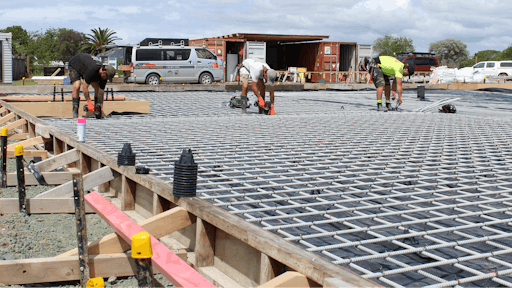Cutting-edge Composites in Modern Structure Projects
Cutting-edge Composites in Modern Structure Projects
Blog Article
Unlocking the Ecological Benefits of Recycled Composites in Building And Construction and Design
In the world of construction and style, the application of recycled composites holds substantial promise for boosting sustainability practices and decreasing ecological impact (composites). By including these innovative materials, there is a prospective to deal with essential concerns such as waste reduction, energy conservation, and a reduction in carbon impact. The shift towards a much more lasting future in these industries rests on opening the complete possibility of recycled composites. This discussion will check out the diverse benefits and challenges connected with incorporating recycled composites into building and style, supplying a glance into the transformative possibilities that lie ahead.

Environmental Impact Reduction
The decrease of ecological effect through using recycled composites in building and construction and layout plays a critical duty in sustainable practices. By including recycled compounds into building products, the building industry can dramatically reduce its carbon footprint and add to an extra environment-friendly future. These sustainable products, made from repurposed plastics, wood fibers, or various other recycled aspects, provide a viable choice to conventional construction products without endangering on high quality or resilience.
Recycled composites aid draw away waste from landfills and lower the requirement for removing resources, thus preserving natural sources. Furthermore, the production process of these composites commonly consumes much less energy and produces less greenhouse gases compared to producing virgin materials (composites). This change towards making use of recycled composites not just minimizes ecological injury however additionally promotes a circular economic situation by motivating the reuse of products that would otherwise be discarded
Waste Minimization
With an emphasis on minimizing waste in building and layout, the integration of recycled compounds offers a sustainable remedy to decrease ecological influence. Waste minimization is an important facet of sustainable practices, and the usage of recycled compounds offers an opportunity to accomplish this goal properly. By utilizing materials that have already offered their first purpose, such as recycled plastics or recovered timber fibers, the construction and design sectors can significantly lower the amount of waste created and sent out to land fills.
Recycled composites have the potential to divert significant amounts of waste from traditional disposal techniques, contributing to a more circular economy where sources are made use of effectively. In addition, the production process of recycled composites often consumes much less power and generates less exhausts contrasted to virgin materials, even more minimizing the ecological footprint of building and style jobs.
Executing waste minimization strategies via the unification of recycled compounds not only helps in conserving all-natural sources however also promotes an extra lasting method to building and making for a greener future.
Power Conservation
Incorporating recycled composites not just minimizes waste in building and style yet also plays a critical role in enhancing energy preservation methods within the sector. The usage of recycled compounds in construction can considerably contribute to energy conservation via various means. By promoting the use of recycled compounds in building and construction and layout, the sector can make substantial strides in the direction of attaining power performance and lowering its carbon impact, ultimately contributing to a more sustainable developed atmosphere.
Carbon Footprint Reduction
Enhancing sustainability practices with the use of recycled compounds in building and layout significantly reduces the carbon impact of the market. By incorporating recycled materials right into the production of composites, the demand for virgin sources decreases, resulting in reduced power usage and greenhouse gas emissions connected with typical production processes. This reduction in carbon footprint is essential in combating environment adjustment and Learn More advertising a much more environmentally friendly approach to construction and layout.
In addition, making use of recycled compounds likewise helps in drawing away waste from garbage dumps, thereby mitigating the environmental influence of disposal and advertising a circular economic situation. The carbon footprint decrease attained through the adoption of recycled composites lines up with the worldwide push in the direction of lasting techniques and the decrease of industrial emissions. It showcases a commitment to accountable resource administration and a change towards greener alternatives in the building and design markets. Eventually, by focusing on the integration of recycled composites, the sector can make significant strides in reducing its carbon impact and adding to a much more lasting future.
Sustainable Future
The assimilation of recycled composites in building and construction and style not only addresses prompt environmental concerns however also lays a strong foundation for a lasting future in the market. By incorporating recycled compounds into structure products and items, the construction and layout industries can considerably reduce their dependence on virgin resources, causing a more round economy. This change towards sustainability is critical for alleviating the environmental effect of traditional building and construction practices, which usually lead to high degrees of waste generation and resource deficiency.

Verdict
To conclude, recycled compounds view website use significant environmental benefits in construction and design by reducing ecological influence, decreasing waste, preserving power, reducing carbon footprint, and promoting a lasting future. Accepting the usage of recycled composites can add to an extra environmentally-friendly technique to structure and style, ultimately leading to an extra lasting and greener future for all.
The reduction of environmental influence with the use of recycled compounds in building and style plays a vital function in sustainable techniques.With a focus on minimizing waste in building and construction and layout, the combination of recycled composites supplies a lasting service to reduce ecological impact. By advertising the use of recycled compounds in building and design, the sector can make considerable strides in the direction of attaining power efficiency and lowering its carbon footprint, ultimately adding to a more lasting built setting.

Report this page